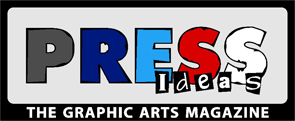Rishab Kohli, TPH Group speaks at Digital Print Asia 2025 on the ideal mix of conventional and digital to achieve business success.
According to Rishab Kohli of TPH Group, one of the leading Indian producers of printing presses for the commercial printing, packaging and label industry, Digital Printing is the future for the printing, publishing & packaging industry in the coming 5 years.
According to Rishab, the drivers of the trend will be lower overheads, lesser space requirement, quicker turnaround and so quicker payment cycles, flexibility of run sizes and to top it all higher average revenue per print. The notable points to support the trend, according to him, would be higher quality and more diverse clientele. The key advantages of digital printing are lesser operating expenses needed, lesser consumables and moving parts, paper & plate saving (compared to offset), and multiple cutoffs without restriction (reel-to reel). These combined with an ideal mix with convention can thus create a level playing field and democratising print.
TPH Group today produces web offset printing presses, Orient X-Press Flex (narrow, mid and wide width flexographic printing machines for the paper and film packaging & converting industries), for packaging and converting industry, they make a range of folder gluers, die cutters, and auto flute laminators & Orient Jet Series (inkjet printing machines for commercial printing and label printing).
Rishab put in his point by placing a detailed study on actual Indian printing companies placed in 4 different scenarios wherein the 1st case study was of 100% conventional; 2nd one was 80% conventional and 20% digital; 3rd being 50-50 conventional and digital; and the 4th one 20% conventional and 80% digital. “A typical mixture between conventional and digital machines is the only logical way to keep up in the market,” asserts Rishab. The 3 key financial metrics to measure the success of a business are Revenue, EBITDA (Earnings Before Interest, Taxes, Depreciation and Amortization) and ROCE (Return on Capital Employed), he concludes by adding, “The ROCE is best at 47% and recommends the perfect 50-50 Conventional-digital combination scenario for best business performance today.”



